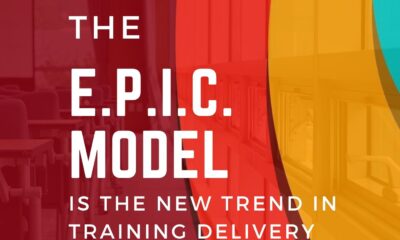Basics
Fundamentals of Marketing and Promotion.

Marketing is a fundamental function of the organization:
The marketing function is considered one of the basic and important functions in any organization, whether delivering products or services. There is no doubt that both production and marketing are complementary, meaning that what matters is not production, but the most important thing is marketing the products (and services) that are produced.
The marketing function aims to:
- Recognize the needs and desires of consumers.
- Transform these needs and desires into goods and services
- Working to market them to the largest number of consumers, which results in consumers buying those goods or obtaining these services to satisfy their various desires and needs.
Production and marketing are the essences of economic life in any society. This is because the economic system in any country aims to satisfy the needs of society with all the goods and services that consumers need. The role of marketing in this context is to focus on identifying those needs that are compatible with consumers’ desires for goods and services and in a way that satisfies the needs and desires of consumers.
What is marketing?
There are several definitions of marketing:
- Some see marketing as the activity of pricing, promoting, and distributing goods and services that seek to satisfy the desires of individuals and organizations.
- There is also another definition that sees marketing as the process of planning, implementing, pricing, promoting, and distributing goods and services to create exchanges to satisfy the desires and needs of individuals and organizations.
- Finally, there is a third definition that sees marketing as all aspects of activity that transfer goods and services from the producer to the consumer.
Why marketing is important?
Marketing is important to both the producer, the customer, and society.
- The importance of marketing for the producer:
For the producer, successful and effective marketing leads to:
- Distribution of production for all goods and services.
- Achieving profits.
- Enabling the producer to identify the new wants and needs of customers.
- The possibility of increasing the quantity of products, which leads to a reduction in prices.
- The possibility to specialize in the production of one distinct product, through the continuous development of this product.
- The importance of marketing to the customer:
For the customer, successful and effective marketing leads to fulfilling his/her needs of goods and services with the following benefits:
- Fair price.
- Proportionate amount.
- Good quality.
- On the right time.
- In the right place.
- The importance of marketing to society:
- Increasing the volume of economic activity within the community.
- The success of projects (productive and service) leads to increased investment.
- Raising the standard of living of citizens.
- The possibility of employing the largest number of unemployed people to reduce unemployment.
- The possibility of exporting and increasing financial resources and allowing the establishment of new projects.
Benefits of Marketing:
- Time Utility:
It means that the marketing activity provides all the goods at the right time. That is, storing it at a time when there is no demand for the product and displaying it at the time when the customer needs it.
- Place Utility:
Goods can be provided everywhere through various means of transport (river – land – air – sea – …) to transport the product from the place of production to the place of distribution.
- Possession Utility:
It means the transfer of ownership of the product through purchases and sales from the producer to the customer.
- Form Utility:
Marketing allows production management to identify customers’ desires for goods (and services) in the form and quality that they desire.
The Marketing Mix (8 Ps):
The marketing mix includes a set of policies or marketing activities that integrate and interact with each other to produce a successful and effective marketing activity. The mixture includes several basic elements, known as (8 Ps):
- Product.
- Price.
- Promotion.
- Place.
- People (personnel).
- Process.
- Physical evidence.
- Performance.

All of these elements represent the marketing policies for organizations to prepare their integrated marketing plan. Also, each of these policies includes a set of sub-policies that are integrated to make these policies successful.
- Product:
It means all the goods and services provided by the facility to customers, whether or not the facility aims for profit. This is usually done through practicing several sub-marketing functions, the most important of which are:
- Production of a distinct commodity (distinguishing products, that each commodity has a distinct name)
- Packaging design
- Availability of quality standards in the product.
- Providing a product that meets the needs and desires of customers.
- The importance of studying the life cycle of products which usually pass through several stages which are:
- Introduction to the market.
- Growth.
- Saturation.
- Decline.
Understanding these stages helps organizations to address the need to develop their product, develop their packaging, produce a new product, or reconsider the marketing mix as a whole.
- Price:
Pricing policy is intended to determine the appropriate price of a product following the variables of supply and demand in the market, as well as the ability of customers to purchase that product. The pricing policy includes some sub-policies, the most important of which are:
- Determining the basic price of product.
- Price discrepancy in relation to transaction size (quantity discount)
- Installment sale or deferred sale
- Cash sales.
- Determining the policy of discounts (quantity discount – season discount – loyalty discount… etc.)
- Promotion:
It is a set of policies that interact and integrate through the so-called promotion mix, which includes several activities, which are:
- Advertising.
- Personal selling.
- Sales promotion.
- Publishing.
- Public relations.
- Place:
It means the distribution channels through which all goods and services are transmitted from the producer to the consumer, which includes the following activities:
- Direct selling (through the producer’s outlets).
- Selling to wholesalers.
- Selling to retailers.
- Authorized agent.
- Broker.
- A combination of the previous activities.
The distribution process is linked to both transportation and storage policies.
- People (Personnel):
The marketing team and all employees responsible for marketing in the organization along with their thoughts and aspirations will have a crucial effect on marketing efforts.
The first step in developing an advertising and marketing plan is to grasp who your target market is. It’s vital to understand your target market and create detailed customer personas.
This will help you communicate immediately to a variety of needs and goals of your goal market with readability and purpose. That’s why innovative content takes a human approach. Respect and empathy are extra than simply keywords. They are the foundation of a sustainable advertising strategy.
It’s integral for all and sundry concerned in marketing products, which include affiliates. Each performs a function in the organizational image and reputation.
- Process:
It includes all procedures necessary to deliver the product from the manufacturer to the customer in addition to after-sale services, such as transportation, maintenance, spare parts, supply, and warranty. In addition to the installment of all the various equipment for the goods that need such installations. Therefore, customers’ satisfaction relies on the efficiency of the process and limiting errors and variations.
- Physical evidence:
The physical evidence elements of the marketing mix refer to the tangible items related to the product or the place where the product is delivered or manufactured. This could include:
- The design of the product along with the interior and exterior design of the building, shop, office…etc.
- The theme of the website.
Design and layout are important as they need to be expressive and representative of the organization’s activity and values. For example, a sportswear retailer needs to ensure that the display, lighting, and internal design present an image of activeness and motivation.
The following processes can be completed to ensure the physical environment gives a positive experience for customers:
- The store should be clean
- The design of the store should reflect the image of the business internally and externally.
- Availability of facilities such as parking, toilet, kids’ area…etc.
The same for websites:
- Easy to navigate
- Products should be displayed with sufficient details.
- Providing information about the company and customer service should be responsive and effective.
- The layout should use colors, text and images that demonstrate the personality and image of the business.
- Performance:
Here, this means the performance of the product that the customer obtains after the purchase process and its conformity with his expectations, whether through a mental image of the organization or the information provided by the seller, whether in person or on the website. In this matter, the after-sales service and feedback are vital to the marketing mix process, which directly affects customer loyalty and the image of the organization.
The promotion mix:

The promotional mix includes several basic elements that aim to stimulate the sales process, the most important of which are:
- Advertising
- Personal Selling
- Sales Activities / Sales Promotions
- Publicity.
- Public Relations
- Advertising:
It is a non-personal means of providing goods or services by a known entity. That is, it is an activity that leads to the dissemination or broadcast of advertising messages to the public to urge them to buy the goods and services that are being advertised.
Conditions that must be met in the advertisement:
- The necessity of defining the audience to whom the advertising message is directed.
- Choosing the technical points that have the greatest impact on the audience of buyers or consumers to whom the advertising message is directed.
- Choosing the best appropriate methods for the audience to whom the advertising messages are directed, by comparing the costs and benefits of these methods.
The difference between information and propaganda:
- Information: means that it disseminates facts, information and news among the public with the aim of spreading ideas among its members and developing awareness among them.
- Propaganda: It is an activity that leads to influencing the ideas and thoughts of the audience in order to make them believe in the contents of that advertisement. Propaganda can be done in more than one way, visible or audible alike information, however the information in propaganda is usually subliminal.
- Personal selling:
It is a personal communication that takes place through sales representatives who meet customers, present products to them, and highlight their advantages to convince them and urge them to buy the product.
- Sales activities/promotions:
And that is through non-advertising and direct selling. The most common sales promotion methods are Samples, free gifts, special offers, promotional vouchers, and sale seasons.
- Publicity:
It is intended to raise the demand for the purchase of goods or services by publishing commercial data about them in one of the publications such as newspapers, radio, television, and internet without payment of any fee by the party concerned with publishing these commercial data however, the company may provide the publisher with samples or a free product. For example, social media influencers and reviewers.
- Public Relations:
Public relations has an important role in marketing activity in general and promotion, particularly that it develops relations with other organizations through special offers to their employees along with cooperating with similar and complementary industries.
The 7 Cs as a modern perspective of marketing mix:
Along with the mentioned approaches and strategies, there is a modern approach that emerged in the field of marketing which is called the 7 Cs:
- Clients.
- Convenience.
- Competition.
- Communication.
- Consistency.
- Creative content
- Credibility.

The environmental factors surrounding the marketing activity:

- the competitive environment:
There is an important necessity for any facility to monitor the activities and actions of its competitors and compare their products, prices, distribution outlets, and ways of promoting them, to determine the strengths and weaknesses that characterize the organization. That is, there is a detailed study that must be carried out by the organization to learn all the marketing policies carried out by the competing entity in the market. One of the most important areas of competition is product pricing. There are several well-known strategies in the field of pricing competition, the most important of which are:
- Market Penetration:
Where a low price is determined for the product by reducing the cost of production (not reducing quality), which results in achieving a larger sales volume and thus the organization’s ability to obtain a greater market share.
- Skimming Policy:
A high price is set and directed to customers who need it most and are willing to pay a high price for it.
- Distinction Policy:
Where the organization focuses on the characteristics and qualities in its products that make it distinct or different from the competing organizations.
- Focus Policy:
Either focusing on a specific category of customers or products.
- The economic environment:
The economies of most countries go through successive periods of boom and economic crises through four stages:
- Growth stage:
This stage is characterized by a high level of per capita income, a decrease in unemployment and inflation, an increase in the purchasing power of the citizen, and an increase in his desire to spend.
- Contraction/shrinking stage:
There is a decrease in purchasing power, an increase in unemployment, and therefore a decrease in the desire to buy.
- Recession stage:
It is characterized by a very low income, less spending, and a large increase in the unemployment rate, which requires the need to develop fiscal and monetary policies and control the negative effects of the recession on the economic situation.
- The recovery stage:
This stage is characterized by a gradual improvement in the economic situation.
- The political and legal environment:
It is a set of policies, systems, and legislation prevailing in society.
- The technological environment:
It is a group of technological developments, which has become a fierce competition for all markets in any country.
- The social and cultural environment:
The environment is influenced by the set of values, customs, traditions, and cultures that have a significant impact on the behavior of customers in the market.
Conclusion:
Marketing is a science, art, and an experience because those involved in marketing can benefit from the scientific principles that have been reached in the various areas of marketing that increase their efficiency and the success of their marketing decisions. However, there is no doubt that this success is linked to the personal experiences, capabilities, and skills of the marketing decision-makers.
Therefore, the combination of knowledge and experience in the field of marketing is one of the most important approaches that increase the effectiveness and capabilities of marketing teams so that they can increase their capabilities if this knowledge is combined with the development of their ideas and the development of their information through familiarity with modern concepts in the field of marketing and how to practice and apply these concepts in the reality in their organizations.
Basics
The Power of Digging Deeper: Unraveling Problems with Root Cause Analysis

In today’s fast-paced world, it’s easy to fall into the trap of providing quick-fix solutions to problems without truly understanding their underlying causes. But what if I told you there’s a powerful tool that can help you cut through the surface-level issues and get to the root of the problem?
Root Cause Analysis (RCA) is a systematic approach that enables you to dig deeper and unravel the complex web of factors that contribute to a problem. By identifying the underlying causes, RCA empowers you to implement targeted and effective solutions that address the root of the issue, rather than just treating the symptoms.
Whether you’re a business owner looking to eliminate recurring problems or an individual striving for personal growth, mastering the art of RCA can be a game-changer.
In this article, we will explore the power of digging deeper through Root Cause Analysis and how it can transform the way you approach and solve problems. Get ready to unlock the secrets to lasting solutions and uncover the true power of RCA.
What is Root Cause Analysis?
Root Cause Analysis (RCA) is a structured method used to identify the underlying causes of problems or incidents. It involves a comprehensive investigation into the factors that contributed to the issue, aiming to uncover the root cause rather than simply addressing the symptoms. By understanding the root cause, you gain valuable insights that enable you to implement effective solutions and prevent the problem from recurring.
RCA is commonly used in various fields, including business, engineering, healthcare, and quality management. It helps organizations and individuals examine their processes, systems, and behaviors to identify areas for improvement. By adopting a systematic and analytical approach, RCA provides a solid foundation for problem-solving and decision-making.
The Importance of Root Cause Analysis
Root Cause Analysis is essential for effective problem-solving and decision-making. It goes beyond surface-level solutions and helps you understand the underlying factors that contribute to a problem. By addressing the root cause, you can prevent the problem from recurring, saving time, resources, and frustration.
One of the key benefits of RCA is its ability to eliminate guesswork. It provides a structured framework that guides your investigation, ensuring that you consider all relevant factors and collect the necessary data. This systematic approach helps you avoid jumping to conclusions or implementing ineffective solutions.
RCA also encourages a proactive mindset. Instead of treating problems as isolated incidents, it encourages you to view them as opportunities for improvement. By focusing on the root cause, you can identify patterns, trends, and systemic issues that may be impacting your organization or personal life. This proactive approach allows you to address the underlying causes and create lasting solutions.
Benefits of Using Root Cause Analysis
Using Root Cause Analysis offers several benefits for both individuals and organizations. Let’s explore some of the key advantages:
1. Effective Problem Solving:
RCA enables you to identify the root cause of a problem, allowing you to implement targeted and effective solutions. By addressing the underlying factors, you can eliminate the problem at its source, rather than just treating the symptoms.
2. Prevention of Recurring Issues:
By understanding the root cause, you can implement preventive measures that eliminate the likelihood of the problem recurring. This saves time, resources, and frustration in the long run.
3. Improved Decision Making:
RCA provides valuable insights that inform your decision-making process. By understanding the underlying causes, you can make more informed choices that align with your goals and objectives.
4. Enhanced Efficiency:
By addressing the root cause, you can streamline your processes and systems, leading to increased efficiency and productivity.
5. Continuous Improvement:
RCA encourages a proactive approach to problem-solving, fostering a culture of continuous improvement. By consistently analyzing and addressing root causes, you can drive ongoing growth and development.
Steps to Conduct a Root Cause Analysis
Conducting a Root Cause Analysis involves a systematic approach that consists of several steps. While the specific steps may vary depending on the context and problem at hand, the following framework provides a general guideline:
1. Define the Problem:
Clearly articulate the problem or incident that you want to analyze. This step ensures that everyone involved has a shared understanding of the issue.
2. Gather Information:
Collect relevant data and information related to the problem. This may include incident reports, interviews, data analysis, and documentation. The goal is to gather as much information as possible to inform your analysis.
3. Identify Possible Causes:
Brainstorm and list all the potential causes that could have contributed to the problem. This step encourages creative thinking and ensures that you consider a wide range of possibilities.
4. Analyze Causes:
Evaluate each potential cause and determine its likelihood and impact. Use tools such as cause-and-effect diagrams, fishbone diagrams, or the 5 Whys technique to explore the relationships between causes and effects.
5. Determine the Root Cause:
Based on your analysis, identify the underlying factor or factors that are most likely responsible for the problem. This may involve further investigation and validation.
6. Develop Solutions:
Once you have identified the root cause, brainstorm and develop targeted solutions that address the underlying factors. Ensure that your solutions are practical, feasible, and aligned with your goals.
7. Implement and Monitor:
Put your solutions into action and monitor their effectiveness. This step allows you to assess whether the problem has been resolved and identify any potential issues or barriers.
8. Learn and Improve:
Reflect on the RCA process and outcomes. Identify lessons learned and areas for improvement to enhance your future problem-solving efforts.
By following these steps, you can conduct a thorough and effective Root Cause Analysis that uncovers the underlying causes of a problem and guides your decision-making process.
Tools and Techniques for Root Cause Analysis
There are various tools and techniques that can enhance your Root Cause Analysis process. Here are some commonly used ones:
1. Cause-and-Effect Diagrams:
Also known as Ishikawa or fishbone diagrams, these visual tools help you identify potential causes and explore their relationships. They provide a structured framework for brainstorming and categorizing causes into different categories, such as people, processes, equipment, environment, and materials.
2. 5 Whys Technique:
This technique involves repeatedly asking “Why?” to uncover the underlying causes of a problem. By digging deeper with each “Why?” question, you can reach the root cause.
3. Pareto Analysis:
This technique helps you prioritize the causes based on their frequency or impact. It allows you to focus on the most significant factors and allocate resources accordingly.
4. Failure Mode and Effects Analysis (FMEA):
FMEA is a systematic approach used to identify potential failure modes and their effects. It helps you anticipate and prevent problems before they occur.
5. Statistical Analysis:
Statistical tools, such as regression analysis or hypothesis testing, can be used to analyze data and identify patterns or correlations that contribute to the problem.
These tools and techniques provide valuable frameworks and methodologies for conducting a thorough Root Cause Analysis. By leveraging them effectively, you can enhance your problem-solving capabilities and uncover deeper insights.
Common Challenges in Root Cause Analysis
While Root Cause Analysis offers numerous benefits, it also presents several challenges that you may encounter during the process. Being aware of these challenges can help you navigate them effectively. Some common challenges include:
1. Complexity:
Some problems may have multiple causes and factors that interact in complex ways. Untangling this complexity requires patience, thoroughness, and a systematic approach.
2. Limited Data or Information:
Insufficient or incomplete data can hinder your analysis and make it challenging to identify the root cause. In such cases, it may be necessary to gather additional information or use alternative analytical methods.
3. Subjectivity:
Root Cause Analysis involves interpretation and judgment, which can introduce subjectivity. It’s crucial to ensure that your analysis is based on objective data and evidence, minimizing bias.
4. Time Constraints:
Conducting a thorough RCA takes time, and tight deadlines may limit your ability to explore all potential causes. In such situations, it’s important to prioritize and focus on the most significant factors.
5. Resistance to Change:
Implementing solutions based on the root cause may require changes to processes, systems, or behaviors. Resistance to change can pose challenges and require effective change management strategies.
By recognizing and addressing these challenges, you can navigate the Root Cause Analysis process more effectively and achieve more accurate results.
Real-Life Examples of Successful Root Cause Analysis
To illustrate the power of Root Cause Analysis, let’s explore some real-life examples where RCA has been successfully applied:
1. Manufacturing Industry:
A manufacturing company experienced frequent product defects, resulting in increased costs and customer complaints. By conducting an RCA, they discovered that a faulty machine component was causing the defects. They implemented a targeted solution, replacing the faulty component and improving quality control processes, resulting in a significant reduction in defects.
2. Healthcare:
A hospital noticed a high rate of patient falls and injuries. Through RCA, they identified insufficient staff training, poorly designed rooms, and inadequate patient monitoring as contributing factors. By addressing these root causes, they implemented training programs, redesigned rooms to improve patient safety, and enhanced monitoring protocols, resulting in a decrease in falls and injuries.
3. Software Development:
A software development team faced recurring software bugs and delays. RCA revealed that miscommunication and unclear requirements were causing the issues. By improving communication channels, implementing a more structured requirements gathering process, and enhancing quality assurance practices, they were able to deliver software with fewer bugs and on schedule.
These examples demonstrate the transformative impact of Root Cause Analysis. By digging deeper and uncovering the underlying causes, organizations can implement targeted solutions that address the root of the problem, resulting in improved outcomes and increased efficiency.
Implementing Solutions Based on Root Cause Analysis
Identifying the root cause is only the first step. To achieve lasting solutions, it’s crucial to implement the recommendations effectively. Here are some key considerations when implementing solutions based on Root Cause Analysis:
1. Clear Communication:
Clearly communicate the identified root cause, recommended solutions, and the rationale behind them. Ensure that all stakeholders understand the importance of addressing the root cause and the benefits of the proposed solutions.
2. Engage Relevant Stakeholders:
Involve all relevant stakeholders in the implementation process. This may include employees, management, customers, or other external partners. Engaging stakeholders fosters ownership, collaboration, and commitment to the solutions.
3. Allocate Resources:
Provide the necessary resources, such as funding, time, and expertise, to implement the solutions effectively. Consider the potential costs and benefits of the solutions and allocate resources accordingly.
4. Monitor and Evaluate:
Continuously monitor the effectiveness of the implemented solutions. Collect data, measure outcomes, and assess whether the root cause has been effectively addressed. This allows you to make necessary adjustments and ensure long-term success.
5. Promote a Learning Culture:
Encourage a learning culture within your organization or personal life. Embrace the lessons learned from Root Cause Analysis and use them to drive continuous improvement. Foster a mindset of curiosity, innovation, and adaptability.
By implementing solutions based on Root Cause Analysis effectively, you can create lasting change and improve your problem-solving capabilities.
Training and Resources for Mastering Root Cause Analysis
Mastering Root Cause Analysis requires knowledge, skills, and experience. Fortunately, there are various training programs, resources, and tools available to help you enhance your RCA capabilities. Here are some options to consider:
1. Training Programs:
Enroll in RCA training programs or workshops offered by professional organizations, universities, or consulting firms. These programs provide in-depth knowledge, practical techniques, and case studies to develop your RCA skills.
2. Certifications:
Pursue certifications in Root Cause Analysis, such as the Certified RCA Analyst (CRAA) or the Certified RCA Facilitator (CRAF). These certifications validate your expertise and enhance your professional credibility.
3. Books and Publications:
Explore books, articles, and publications on Root Cause Analysis. Authors like Ishikawa, Deming, or Ohno have made significant contributions to the field and offer valuable insights.
4. Online Resources:
Leverage online platforms, forums, and communities dedicated to Root Cause Analysis. Engage in discussions, ask questions, and share experiences to learn from others in the field.
5. Internal Training and Mentoring:
If you’re part of an organization, seek internal training or mentoring opportunities. Learn from experienced colleagues or experts within your organization who have expertise in RCA.
By investing in your RCA skills and leveraging the available resources, you can become a proficient Root Cause Analyst and drive meaningful change in your personal and professional life.
Conclusion: Harnessing the Power of Root Cause Analysis
In our fast-paced world, taking the time to dig deeper and understand the root causes of problems is crucial for lasting solutions. Root Cause Analysis provides a systematic and structured approach to unraveling complex issues, empowering you to address the underlying causes rather than just treating the symptoms. By mastering the art of RCA, you can transform the way you approach and solve problems, whether in your business or personal life.
Root Cause Analysis offers numerous benefits, including effective problem-solving, prevention of recurring issues, improved decision-making, enhanced efficiency, and a culture of continuous improvement. By following a systematic process and leveraging tools and techniques, you can conduct a thorough RCA and uncover deeper insights.
While Root Cause Analysis presents challenges, such as complexity, limited data, subjectivity, time constraints, and resistance to change, recognizing and addressing these challenges can help you navigate the process effectively.
Real-life examples demonstrate the power of RCA in various industries, from manufacturing to healthcare to software development. Implementing solutions based on RCA requires clear communication, stakeholder engagement, resource allocation, monitoring, and a learning culture.
To master Root Cause Analysis, explore training programs, certifications, books, online resources, and internal mentoring opportunities. By investing in your RCA skills, you can become a proficient problem-solver and drive meaningful change.
Harness the power of Root Cause Analysis and unlock the secrets to lasting solutions. Dig deeper, understand the root causes, and transform the way you approach and solve problems. Get ready to unravel complex issues and unleash the true power of RCA.
Basics
The Best 5 Planning Strategies for Startups
Planning is an important part of starting a business. It helps you set goals, prioritize tasks, and keep track of progress. Here are five essential planning strategies that will help you plan effectively.

Planning is an important part of starting a business. It helps you set goals, prioritize tasks, and keep track of progress. Here are five essential planning strategies that will help you plan effectively.
1- Identify Key Resources.
One of the first things you should do when planning your startup is identify key resources. These might include people, money, equipment, software, or other items that are needed to launch your company. You need to make sure that these resources are available before you begin building your product.
You should identify key resources such as equipment, supplies, and people who can help you. Once you know what you need, you can create a detailed plan for getting those things. For example, if you want to open a bakery, you might need to buy a mixer, baking pans, and ingredients. If you want to sell handmade jewelry, you might need to purchase a sewing machine, beads, and other materials.
2- Find Funding.
Once you have identified your resources, you will need to determine how much funding you need to build your product. This is an important decision because it will affect how quickly you can move forward with your business plan. If you have limited funds, you may need to consider alternative ways to raise capital.
According to Dave Lavinsky “The 5 Most Common Funding Sources” are:
- Funding from Personal Savings. Funding from personal savings is the most common type of funding for small businesses.
- Business Loans.
- Friends & Family.
- Angel Investors.
Angel investors are generally wealthy individuals like friends and family members; you just don’t know them (yet). At present, there are about 250,000 private angel investors in the United States that fund more than 30,000 small businesses each year. Therefore, Networking is a great way to find an angel investor for your business.
- Venture Capital.
Venture capitalists and VC firms are professional investors that are more involved with business management, and they play a significant role in setting milestones, targets, and giving advice on how to ensure greater success.
3- Create a Business Plan.
A business plan is a document that outlines your goals, objectives, and strategy for building your company. It should also contain financial projections and other key metrics that will help you measure your success.
The first step in creating a business plan is deciding what kind of business you want to start. You should think about whether you want to be a sole proprietor, work for yourself, or join a company. If you decide to go into business on your own, you’ll need to create a business plan. A business plan is a document that outlines your business idea, describes your products and services, explains how you’re going to market them, and shows how much capital you’ll need to get started.
For example, if you want to launch a new product line, you might decide to create a prototype, conduct market research, and develop a marketing strategy.
Once you have identified each step, you can determine how much time and resources you will need to complete each task. However, if you hire employees, you will need to establish job descriptions, interview potential candidates, and train them.
*Find out how to manage unplanned and sudden tasks like a master: How to manage Unplanned and Sudden Tasks like a master? – SKILLTECS
4- Build a Minimum Viable Product (MVP).
MVP (Minimum Viable Product) is a prototype of your product that you build first before launching your full product. This allows you to test out your idea with real users and gather feedback before investing too much money into developing your product.
An MVP is a version of your idea that is ready to be tested. You should test it before investing too much time into building something bigger than what you want to accomplish. Once you have built your MVP, you can use it to determine whether you should invest more time and resources into developing your idea further.
If you find that your MVP isn’t working, then you know that there’s a problem with your idea.
5- Identify Your Market Niche.
Once you have an idea for what you want to build, you need to identify who will use your product. You should consider the following questions when determining your market niche: What problem does your product solve? Who is your ideal customer? How do you plan to reach them?
One of the basic steps in planning is identifying your market niche. What type of products or services do you want to offer? Do you want to sell online or offline? Are you looking to start a home-based business or work from a brick-and-mortar location? Once you know what you want to offer, you can determine whether you should focus on one product or service or multiple ones.
You might decide to specialize in selling one particular item, such as a certain brand of clothing or a specific kind of jewelry. Or you could choose to offer several different items, such as a line of handbags or a variety of greeting cards.
*Learn more about planning here: All You Need to Know About Planning – YouTube
Basics
Can Effective Leadership Actually Be Taught? Four Myths About Leadership
Effective leaders must possess a set of skills that allow them to motivate others, communicate effectively, and manage conflict. These traits cannot be learned in a classroom setting, but rather must be developed through experience.

Effective leaders must possess a set of skills that allow them to motivate others, communicate effectively, and manage conflict. These traits cannot be learned in a classroom setting, but rather must be developed through experience.
We will also look at some of the most common myths about leadership.
There are several myths surrounding what makes an effective leader. One popular myth is that effective leaders are born with certain qualities. While there are certainly people who were born with these characteristics, the truth is that no one has been born with any particular trait. Instead, effective leaders develop their skills throughout their lives.
First myth: Leadership is often defined as having power over other people.
But true leaders are those who use their influence to help others succeed. In order to become an effective leader, one must first understand what makes a person a leader. A leader is someone who has the ability to motivate others, communicate well, and resolve conflicts. The best leaders are able to develop these qualities throughout their lives.
Second myth: Leadership is something that can be taught.
The second myth we will debunk is that leadership is something that can be taught. In fact, there are many people who believe that leadership is simply a skill that can be learned. However, according to Dr. John C. Maxwell, leadership is much more than a skill. He states that leadership is a mindset that allows one to influence and lead others. Leadership is not something that can be taught; it is something that must be cultivated.
The best leaders are those who understand that people are motivated by different things. Some want recognition, while others want to feel valued. Some want to be challenged, while others want to be coddled. And some want to be told what to do, while others want to lead.
Effective leaders are those who know what they want and then go after it. They are able to identify problems and opportunities and take action to solve them. They are able to lead people towards goals and away from distractions. And they are able to work well with other people.
Third myth: There is only one way to be an effective leader.
In fact, there are many ways to lead, and each leader has his or her own style. Some people are natural born leaders, while others learn from watching those who came before them. Regardless of whether one is naturally inclined toward leading, however, there are certain skills that every leader should master.
Fourth myth: Leadership is something innate.
In fact, leadership is a skill that can be learned. Leadership is not a natural talent; it is a learned behavior. As such, there are many ways to develop leadership skills. One of the best ways to learn leadership skills is to observe those who already possess them. Leaders often model their behaviors after successful people. By observing what makes these individuals effective, we can learn from their actions.
-

 Management Tools2 years ago
Management Tools2 years agoWhat is the Drill-Down technique?
-

 Management Tools2 years ago
Management Tools2 years agoAll you need to know about the Pareto principle and the 80/20 rule.
-

 Business2 years ago
Business2 years agoWhat is Curriculum Development and how to implement it?
-

 Business2 years ago
Business2 years agoHow to manage Unplanned and Sudden Tasks in 6 Steps like a Master?
-

 Business2 years ago
Business2 years agoE.P.I.C. Model is the new trend in training delivery.
-

 Business1 year ago
Business1 year agoCommunication Rights & Responsibilities
-

 Management Tools3 years ago
Management Tools3 years agoThe Appreciation Technique
-

 Business2 years ago
Business2 years agoMarketing is the new strategy in Law Enforcement.





